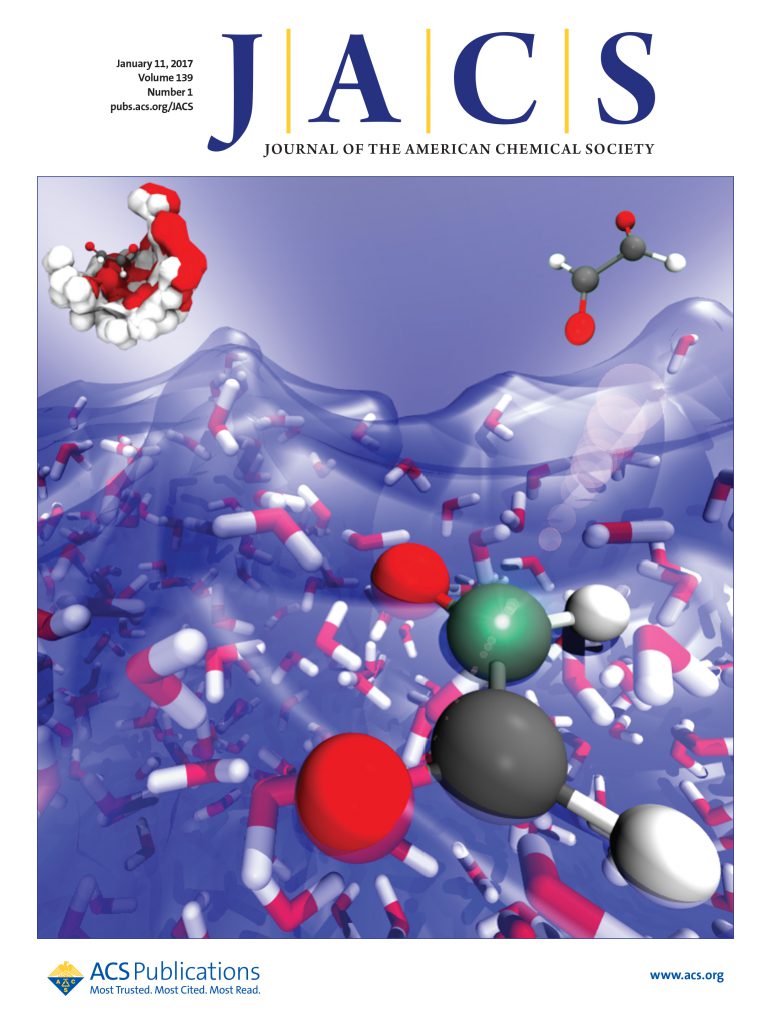HFIP辅助下苯基C-H键的电化学直接羟基化
IF 14.4
1区 化学
Q1 CHEMISTRY, MULTIDISCIPLINARY
引用次数: 0
摘要
苯基醇是一种特殊的结构基序,在生物活性天然产物和药物制剂中无处不在。苯基C-H键的选择性氧化羟基化是一种高效、原子经济和环境友好的方法。然而,酒精过度氧化的固有障碍仍然构成重大挑战。在这里,我们报道了hfip辅助的苯基C-H键的电化学氧化羟基化,利用绿色,良性的水作为羟基源。该方法与广泛的底物具有显著的兼容性,包括富电子、电子中性和缺电子的烷基芳烯,含伯、仲、叔苯基C-H键的烷基芳烯,甚至药物分子。值得注意的是,该方法能够有效地合成18o标记的生物相关衍生物,突出了其在同位素标记研究中的实用性。此外,该电化学方案已被证明易于扩展(在200 mA/cm2下高达10 g),从而显示出其在工业应用方面的巨大潜力。机理研究表明,HFIP可以通过氢键相互作用稳定苯基醇,从而降低芳香环的电子密度,从而使其进一步氧化失活,提高反应的选择性。本文章由计算机程序翻译,如有差异,请以英文原文为准。

Electrochemical Direct Hydroxylation of Benzylic C–H Bonds Assisted by HFIP
Benzylic alcohols represent a privileged structural motif that is ubiquitous in bioactive natural products and pharmaceutical agents. Selective oxidative hydroxylation of benzylic C–H bonds is an efficient, atom-economical, and environmentally friendly methodology. However, the inherent obstacle of alcohol overoxidation still poses a significant challenge. Herein, we report an HFIP-assisted electrochemical oxidative hydroxylation of benzylic C–H bonds, utilizing green, benign H2O as the hydroxyl source. This method exhibits remarkable compatibility with a broad range of substrates, including electron-rich, electron-neutral, and electron-deficient alkylarenes, alkylarenes bearing primary, secondary, and tertiary benzylic C–H bonds, and even pharmaceutical molecules. Notably, the method enables efficient synthesis of 18O-labeled biorelevant derivatives, highlighting its utility for isotopic-labeling studies. Furthermore, this electrochemical protocol has been shown to be readily scalable (up to 10 g under 200 mA/cm2), thus demonstrating its promising potential for industrial application. Mechanistic studies have revealed that benzylic alcohols can be stabilized by HFIP via hydrogen-bonding interactions, thereby reducing the electron density of the aromatic rings, subsequently deactivating its further oxidation and improving the selectivity of the reaction.
求助全文
通过发布文献求助,成功后即可免费获取论文全文。
去求助
来源期刊
CiteScore
24.40
自引率
6.00%
发文量
2398
审稿时长
1.6 months
期刊介绍:
The flagship journal of the American Chemical Society, known as the Journal of the American Chemical Society (JACS), has been a prestigious publication since its establishment in 1879. It holds a preeminent position in the field of chemistry and related interdisciplinary sciences. JACS is committed to disseminating cutting-edge research papers, covering a wide range of topics, and encompasses approximately 19,000 pages of Articles, Communications, and Perspectives annually. With a weekly publication frequency, JACS plays a vital role in advancing the field of chemistry by providing essential research.

 求助内容:
求助内容: 应助结果提醒方式:
应助结果提醒方式:


